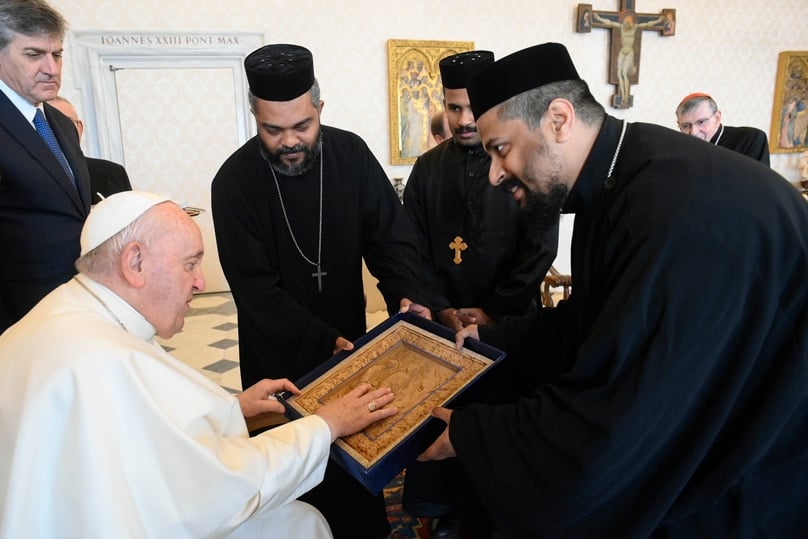
Dear Fr John Flader, I recently spoke with a man who said he belongs to the Syriac Orthodox Church of Antioch, one of what he called Oriental Orthodox Churches. I had never heard of these Churches. Can you tell me something about them?
The first thing I should say is that the Oriental Orthodox churches are not the same as the Eastern Orthodox churches. We are generally more familiar with the latter, which separated from the Catholic Church in 1054 following disagreements and heated arguments. Among these churches are the Greek Orthodox, Russian Orthodox and many others generally known by their country: Bulgarian, Romanian, etc. They base their teaching on the first seven Ecumenical Councils. I wrote about them in my book Question Time 2, q. 180.
What then are the Oriental Orthodox churches? They are churches which became separated much earlier from the one Catholic Church that Christ founded. They comprise six autocephalous, or self-governing, churches: the Coptic Orthodox Church of Alexandria, Syriac Orthodox Church of Antioch, Armenian Apostolic Church, Malankara Orthodox Syrian Church, Ethiopian Orthodox Tewahedo Church and the Eritrean Orthodox Tewahedo Church.
They are ancient churches, founded in apostolic times by the apostles or their earliest disciples. We call them churches because they have validly ordained clergy and consequently their sacraments are considered valid by the Catholic Church.
Their doctrine is based on the teachings of only the first three ecumenical councils: Nicaea in 325, the First Council of Constantinople in 381, and Ephesus in 431. They have in common the theology of Eutyches of Alexandria, who taught that in Christ there is only one nature, which is fully divine and fully human. By contrast, the Catholic theology is that in Christ there are two natures, divine and human.
The Eutychian theology is known as monophysitism, or one nature. It was propounded in the fifth century and was condemned by the Council of Chalcedon in 451. The condemnation led the faithful of Egypt and other countries in the region to hold to their belief in monophysitism and renounce their communion with the Catholic Church in Rome. Today the Oriental Orthodox Churches prefer to use the term miaphysitism, meaning that Christ is fully human and fully divine in one nature.
The majority of their faithful live in Ethiopia, Eritrea, Egypt, Lebanon, Syria, Armenia and India. The Malankara Church is based largely in India. There are also large diaspora communities in parts of the Middle East, Europe, Asia, North and South America, and Australia. At present these Churches have some 60 million adherents worldwide.
The Oriental Catholic Churches follow three liturgical rites: the Armenian Rite; West Syriac Rite, used by the Syriac and Malankara Churches; and the Alexandrian Rite, used by the Coptics, Ethiopians and Eritreans.
As regards the relations of the Oriental Churches with each other, after centuries of separation they finally met in 1965 in Addis Ababa, where they entered into dialogue and achieved full communion with each other. As might be expected, the churches are each separate entities, with no organised formal structure that unites them. It was in Addis Ababa that they began to use the term Oriental Orthodox, to distinguish themselves from the Eastern Orthodox.
With respect to the relationship between the Oriental Orthodox and the Eastern Orthodox churches, they are not in communion with each other, although they have engaged in dialogue in recent times.
In recent times the Oriental Orthodox Churches have also engaged in dialogue with the Catholic Church, leading to an understanding that in some areas their theology is basically that of the Catholic Church. For example, in 1984 the Syriac Patriarch Mar Ignatius Zakka I and Pope John Paul II signed a statement to the effect that the misunderstandings and schisms that arose between their churches do not touch the substance of their faith, and that they confess the true doctrine concerning Christ, notwithstanding the differences in interpretation of the doctrine which arose at the time of the Council of Chalcedon.
